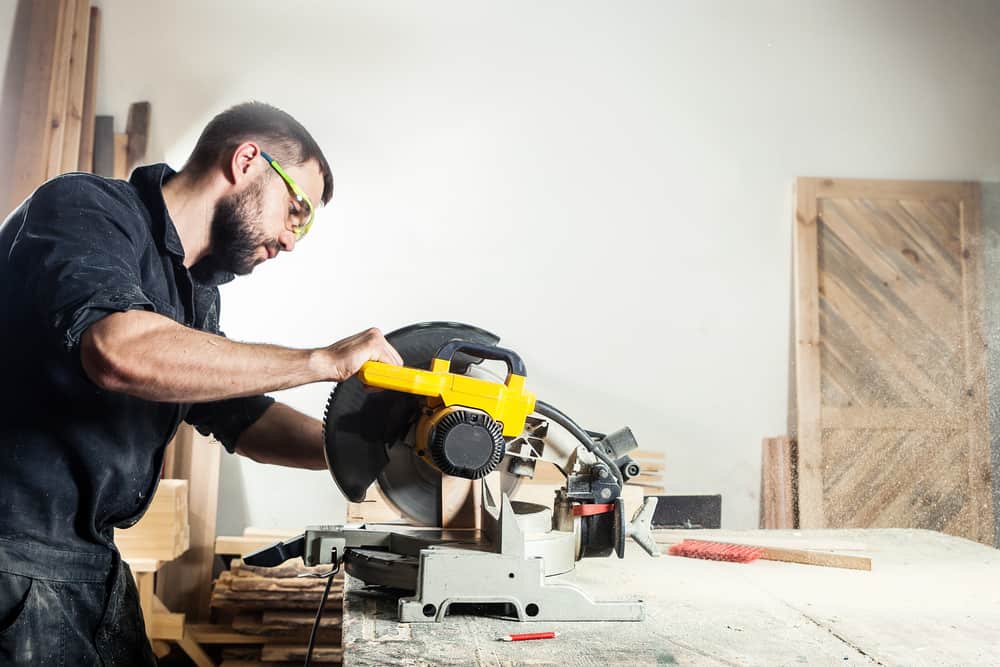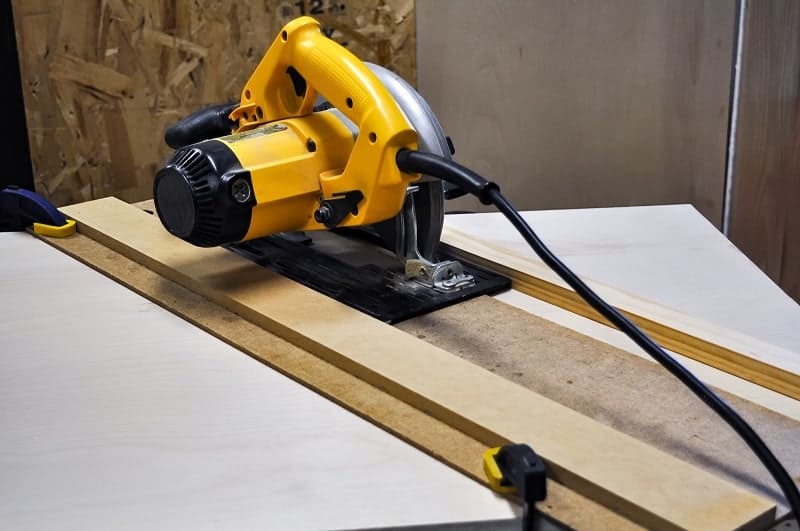To the uninitiated, a track saw and a circular saw look nearly identical.
To some degree, the tools can perform the same tasks. They can both be used to cut straight lines. They can both make mitered cuts. They both have a circular blade.
Where track saws and circular saws differ is in their application and in the unique plunge cut feature that only track saws have.
You are going to need a circular saw of some type. Most homeowners who are taking on their first DIY project will buy a circular saw. That is the default option. They are cheap and easy to use.
If you are looking to make cuts outside of a table saw, you have to choose between a track saw and a circular saw.
Main Difference Between Track Saw vs. Circular Saw
The German manufacturer Festool began creating the track saw design in the early 1960s. The idea was that the long metal guide would improve the cuts you could do with a handheld saw.
The toe-in blade positioning of a track saw is what improves the quality of cuts that it offers.
The “toe-in” design allows the saw to cut using the front of the blade. The back of the blade is held slightly farther away from the cut. This prevents tear-out from the back edge and makes smoother cuts with an almost polished finish.
The built-in riving knife helps to separate the wood, further improving the finished cut.
As Tool Tally says, “Track saws offer one-of-a-kind cuts and a professional, smooth, splinter-free edge that is unmatched by circular and table saws.”
The track saw looks a lot like a circular saw but has a few key differences. The first difference is the plunge cut mechanism. This means that the saw can plunge directly into the board you are cutting. This allows you to cut flooring flush — or nearly flush — with the wall when remodeling.
The other major difference is that a track saw has a track that it runs along. You place this track on the board that you wish to cut, and then you can either clamp it into place or let it hold itself in place with the rubber strips on the bottom.
The saw glides smoothly along this track and makes an accurate, straight cut. The track also prevents kickbacks and is safer to use.
This system’s advantage is that you can rip large plywood boards just as you would with a table saw.
You can also use a fine-tooth blade and use it to cut Formica without chipping. It provides more smooth and precise cuts than a circular saw or framing saw will. The track saw is a precision instrument for making highly accurate cuts.
Because of these unique advantages, the track saw is mostly used by professional cabinet makers who need to make perfect cuts without chipping or marring the board.
It’s super handy when working with a full sheet of MDF or other sheet goods.
Many of the new track saws are cordless. This means the entire saw and track system is lightweight and can be carried by one person. The setup is simple, and it can speed up the rate in which the job gets done.
The downside is that it takes longer to set up a track saw. You have to measure and create at least two pencil marks. Then set the track up along those marks.
The time trade-off means that you will only want to use a track saw when a precise cut is necessary.
Additionally, track saws cost quite a bit more than circular saws do. They are clearly a tool for professionals who can recoup that investment over multiple jobs.
Track Saw Dust Collection
Dust control is pretty great with the track saws and generally better than what you find with a circular saw. They have a better shroud around the blade, and it makes it easier for the dust collector or shop vac to capture the blowing sawdust.
Of course, you can also use the included dust bag as well.
Space-Saving Design
While both the track saw and the circular saw take up almost no space, the track saw can, in many ways, replace the table saw. Since it can provide rip cuts, crosscuts, and long miter cuts, it can replace the table saw.
A table saw is generally faster if you are doing a lot of cuts as it takes less time to set up for each cut.
However, when space is a concern, the track saw comes in handy as it takes up less space and can be easily set up by one person.
Track Saw vs. Circular Saw With Guide
Several folks have started retrofitting their regular circular saws to run on tracks or creating homemade guides from a straight edge and some boards.
These DIY track systems can improve the accuracy of a circular saw, and for rough board work, they come in handy.
However, if you still need a saw that can do the precise Formica cutting and cabinetry work, it can be worthwhile to invest in a track saw.
Track Saw Advantages
- More precise cuts
- No Kickback
- Better Dust Collection
Circular Saw Advantages
- More Affordable
- Can handle most basic cuts
Makita – A Good Track Saw Option
The Makita SPJ6000J1 is a pretty solid track saw for folks shopping for an affordable, yet durable track saw. Brands like the Festool will generally cost more. Makita and Dewalt make track saws that will deliver accurate cuts at a price point that is affordable to most professionals. It has the bevel capacity and track system you need but doesn’t have a higher price tag.





















